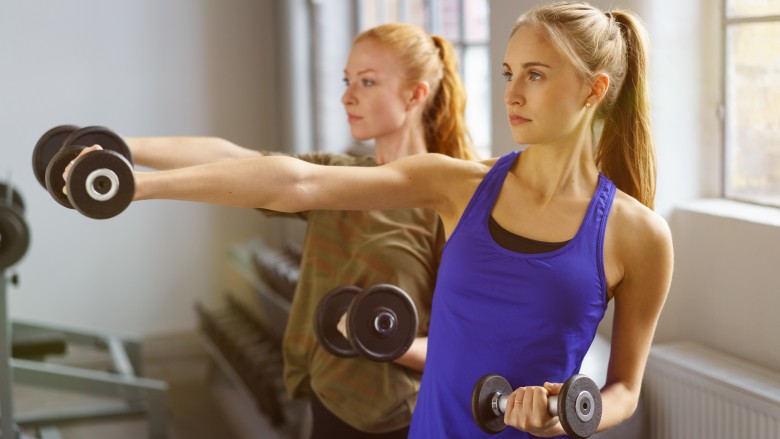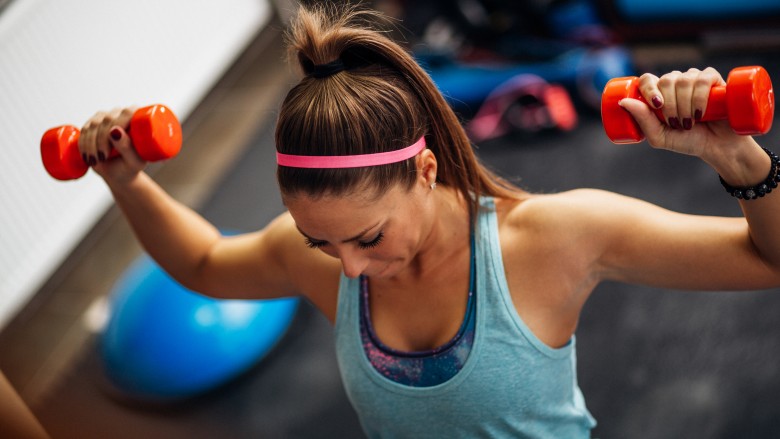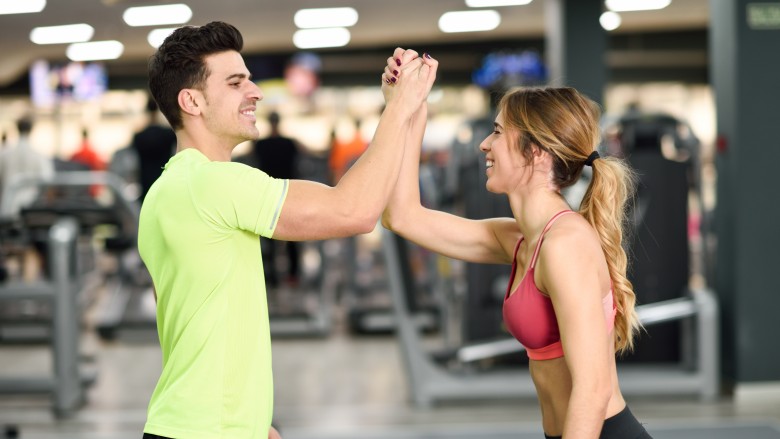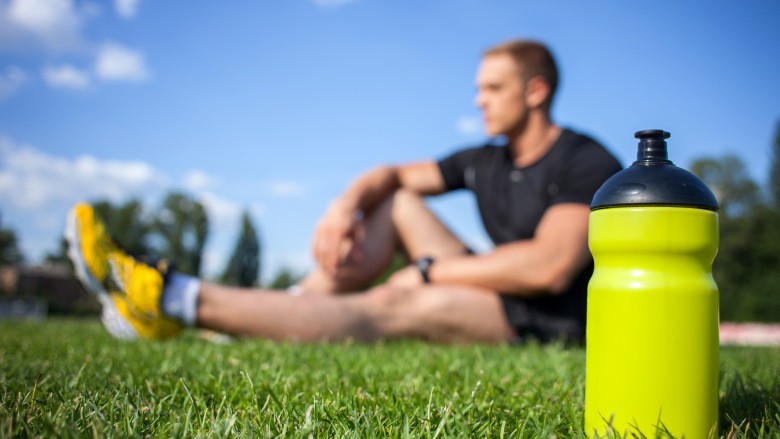Common Mistakes You Make At The Gym
We all know we should be working out and when we do, we can usually find a routine for ourselves. We walk into the gym, throw our stuff into a locker, complete our workout, and leave. We think we're tackling all of the must-do items on the list, but what about the things we should or shouldn't be skipping or the mistakes we may be making along the way? It is quite likely that you have been making at least one, if not multiple, of these common mistakes every time you walk into the gym.
You skip the warm up and cool down
When we are short on time, it's easy to let our workouts be the first to go, but it's important to remember that you don't have to spend two hours at the gym in order to see results. Oftentimes, even a simple ten minute HIIT workout can be the perfect way to fit in exercise on our busiest of days.
With that said, whether your workout is ten minutes, 30 minutes, or 60 minutes, you cannot forget the warm up and cool down. The warm up will do just that, warm up your body and prepare your muscles for the work that lies ahead. When we start our workouts without the proper warm up, we set ourselves up for injury. Your warm up doesn't need to be long or complicated, a simple five to ten minute routine working all major muscle groups is perfect.
When it comes to cooling down, you only need to spend another five to ten minutes and the cool down should consist of a lot of stretching, holding poses for ten to 30 seconds.
You do the same thing every time
If you ever ask a veteran gym goer or fitness enthusiast their top advice for getting started, nine times out of ten, you will likely hear, "try everything and find what you most enjoy." It's solid and honest advice, but it doesn't come without an exception.
When you first start going to the gym, running a mile or curling ten pounds may feel really hard, but as you continue to perform those exercises, they get easier and easier because your body gets used to it. If you keep running that mile at the same original pace or only curling ten pounds, you're going to stop seeing results.
We have to keep our bodies guessing and progressing by varying the speed or distance of your run and increasing the weight you're lifting. Aside from seeing better results through the varied workouts, you're also less likely to get bored from the same old thing.
You don't wipe down the machines or equipment
Just picture it, you are in a zone running on the treadmill, you've been running for awhile and you're pretty sweaty everywhere. You reach for a swig from your water bottle and you drip a few drops of sweat on the handle bars of the treadmill, but you keep running. When your workout is up, you grab your stuff and hop off, heading to a mat to stretch and cool down. What about your machine?
It's easy to get in a zone and honestly forget to wipe down our machine, but more often than not, it appears that most people blatantly choose not to take the extra ten seconds to clean it off for the next person. This isn't just about being nice for the next person who jumps on that machine, this is about hygiene. Sports dermatologist at the University of Cincinnati Brian Adams, MD, says, "Without diligent cleaning, gyms can become breeding grounds for bacteria, viruses and fungi that are harmful to human health."
Next time you're at the gym, make sure you're wiping down everything you're using, from the fitness equipment, to free weights and benches, and the mat used during your cool down.
You aren't including strength training
For years, the idea of being a "cardio queen" was idolized. Whether you were running a marathon, biking long distances, or participating in a triathlon, we all seemed to think the solution to our fitness worries and woes was to do more cardio. Now, running marathons, biking, and triathlons are wonderful feats and if that's your thing, then by all means don't feel like you need to stop, but know that while cardio is great for improving our cardiorespiratory health, it takes more than steady state cardio to improve your overall health and fitness.
That's where strength training comes into play. NSCA Certified Personal Trainer Laurel Rockall says, "Strength training has a very long list of great benefits regardless of age and gender but a couple that really win people over is it's effect on bone health/density as well as it's ability to increase metabolism and burn more calories for longer after our workouts, even when we are at rest!"
Adding in strength training may seem intimidating at first, but no one is expecting you to know it all from the get-go. When starting to add in strength training, check with your gym to see if they offer any educational sessions with a personal trainer so you can learn how to use the equipment or for ideas on various exercises to do. There are also great programs from online trainers, like Karena and Katrina from Tone It Up, who share daily moves or offer exercise videos where you'll learn how to do a variety of strength training exercises.
You have bad form
The caveat to strength training is to be super mindful of your form. If you're trying to lift weights too quickly or with too heavy weight, then your form will likely suffer, which can lead to injury. When learning a new exercise, seek the guidance of a personal trainer or fitness specialist, don't just look at and mimic those around you, you may be learning poor habits and form.
As mentioned earlier, as the current weight you're lifting becomes easier, you're going to need to increase the weight in order to continue to see results and reap the benefits, but if you find your form lacking, the Mayo Clinic recommends you decrease the weight until you can master the proper form for that exercise again.
You're not refueling properly or following a poor diet
This isn't technically a mistake you're making inside the gym, but it's a fairly common mistake that many gym goers make so it is definitely worth noting. As the saying goes, "you cannot out exercise a bad diet," and working out definitely does not allow you to eat whatever you want.
If you're just getting started in the wonderful world of fitness or consider yourself a normal or average exerciser, then you probably don't need to worry as much about the timing of your meals around your exercise, but as you get into a higher intensity or longer workouts, then it would be beneficial to work with a nutritionist to help tailor your nutrition to your goals.
Dr. Joseph Mercola, an osteopathic physician, says it best, "It helps to think of your food as fuel, and consider whether what you're putting in your mouth will best keep your body in optimal working order." Remember, what you eat is fueling your workouts as just as much as what you're eating can ruin them too.
You aren't setting any goals or you're setting unrealistic goals
Author Robin S. Sharma said in his book, The Greatness Guide: Powerful Secrets for Getting to World Class, "what gets measured gets improved." Along those lines, if we aren't setting any goals (in fitness or otherwise), how do we know what to work toward, measure, or when we can celebrate our success?
When it comes to choosing our fitness goals, it is strongly advised and encouraged to come up with SMART goals, the acronym of which stands for specific, measurable, attainable, relevant, and time-bound. When we're able to properly lay out our goals, we can better determine the proper action to achieve them and know when we've accomplished them. An example of a SMART goal could be, "Over the next three months, I will cut my one mile pace from 11 minutes per mile to ten minutes and 30 seconds."
This goal is specific to running, measurable in time, attainable with commitment, relevant to what you're already doing (running), and time-bound (over the next three months).
You go too hard too quickly
There's a fine balance between working out too hard and not working out hard enough to see the results in our workouts. While both are detrimental in their own ways, going too hard seems to be the most common, often leading to what is called overtraining.
According to RRCA certified running coach and ACE personal trainer, Ashley Crossman, in an article for Active.com, "overtraining happens when an athlete performs more training than his or her body can recover from, to the point where performance declines." Some signs of overtraining include change in heart rate, trouble sleeping, joint pain, chronic exhaustion, irregular periods, and increased soreness.
To avoid overtraining, it's important to ensure you're giving your body plenty of rest, including breaks between exercises at the gym, complete and active rest days from the gym, and plenty of sleep at night. Remembering to warm up and cool down properly, being mindful of your body's limits within each workout, and fueling with proper nutrition will also help combat overtraining.
You're not drinking enough water
While we all know we should be drinking plenty of water throughout the day, the question remains if we're drinking enough while we workout?
As we workout, we lose water as we sweat. If we're not properly hydrating through the workout, this can lead to dehydration, especially if you're doing any form of endurance training. Dehydration can lead to excessively tired muscles or leg cramps, among other concerns, and symptoms of dehydration include fatigue, dizziness, confusion, and extreme thirst. To ensure you're staying well hydrated, bring a water bottle with you for your workout, sipping occasionally throughout the duration of the workout.
The National Academy of Sports Medicine recommends three easy methods for monitoring water consumption while exercising: paying attention to the color of your urine, weighing yourself before and after your workout and replacing the weight lost with fluids, and following your body's natural thirst cues.
Don't get discouraged!
Whether you find yourself checking off one of these mistakes or multiple, don't get discouraged. You'll notice that many of these items fit together, like pieces in a puzzle. The whole world of healthy living and fitness is not easy and it is definitely not short. I promise you there is always something new to learn or small adjustments to make in order to be your healthiest and happiest self.
Start small, do your research, begin implementing the necessary changes, and whatever you do, remember that with each trip to the gym, you're making progress. As the saying goes, "no matter how slow you go, you are still lapping everybody on the couch."











